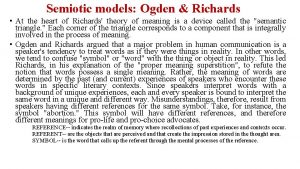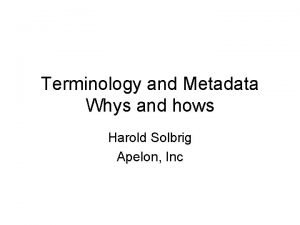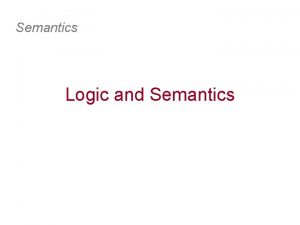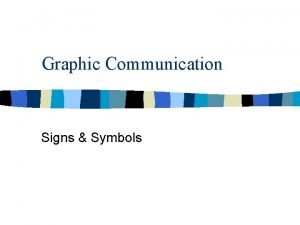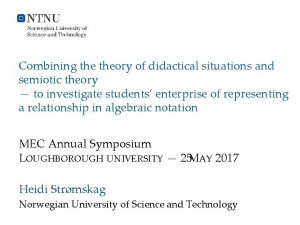Logic as Semiotic Theory of Signs Charles Sanders










- Slides: 10

Logic as Semiotic: Theory of Signs Charles Sanders Pierce

Timeline • Born on 10 Sept 1839, Cambridge, Massachusetts • At 12, read a standard book on logic by Bishop Richard Whately • Began reading Immanuel Kant's Critique of Pure Reason at age 13 • At 16, decided to devote his life to the study of and research in logic • Received a graduate degree in chemistry from Harvard • Published Photometric Researches, 1878 • Published Studies in Logic, 1883 • Died on 19 Apr 1914, Milford, Pennsylvania.

Preview • Signs • Icon • Index • Symbols • Semiotics • Definition • Abstraction • Object>Sign>Interpreter • Three Divisions of Semiotics

Signs: Icon • Represents its signified. • Observer can derive information about its signified. • Types of Icons • Images: Similarity of aspect. • Diagram: Represent relationships of parts rather than tangible features. • Metaphors: Posses a similarity of character, representing an object by using parallelism in some other aspect.

Signs: Index • Think of the word “indicate”. • Indices are directly perceivable events that can act as a reference to events that are not directly perceivable, or in other words they are something visible that indicated something out of sight. • Hyposeme: No actual connection (other than casual) with their object, such as first names, relative pronouns. Work like labels.

Signs: Symbol • Represents something in a completely arbitrary relationship. • Connection between signifier and signified depends entirely on the observer, or more exactly, what the observer was taught. • Symbols are subjective, dictated either by social convention or by habit. • Types of Symbols • Singular symbol: Denotes tangible things • Abstract symbol: Signifies abstract notions.

Semiotic: Definition • “Semiotics is the investigation of apprehension, prediction and meaning; how it is that we apprehend the world, make predictions, and develop meaning. ” • “Logic is another name for semiotics”

Semiotic: Abstraction • “… simplification of detail, wherein formerly concrete details are left ambiguous, vague, or undefined; thus speaking of things in the abstract demands that the listener have an intuitive or common experience with the speaker, if the speaker expects to be understood. Signs are abstractions. ” • Sign is not the object; a sign is perceptual data that refers to an object. • “The sign can only represent the Object and tell about it. It cannot furnish acquaintance with or recognition of that Object; for that is what is meant in this volume by the Object of a Sign; namely, that with which it presupposes an acquaintance in order to convey some further information concerning it. ”

Semiotic: Object-Sign-Interpreter • Sign (representamen) • Something which stands to somebody for something in some respect or capacity. It addresses somebody, that is, creates in the mind of that person an equivalent sign, or perhaps a more developed sign. • Interpretant • Stands for that object, not in all respects, but in reference to a sort of idea. • A context for understanding a sign and what it stands for or represents. • A potential or capacity to recognize meaningful distinctions. • As a sign expresses an object or meaning, the interpretant is a sign in the mind of an interpreter. As one becomes conscious of signs, signs express a meaning. • Ground • Meaning is based upon an existing epistemological ground, the knowledge and experience that determine conduct. • Communication is dependant on a capacity to perceive and interpret signs.

Semiotics: Three Divisions of Semiotics • Three divisions of semiotics; different levels of cultural meanings. If any of these divisions of semeiotics is mistaken, there is a risk of missing the truth. • Pure Grammar: The formal conditions for a sign to exit as an expression of communication, to stand for or represent something. • Critical logic: The necessary conditions for a sign, an expression of communication such as a word, sound, or image, to represent an object or idea. • Speculative Rhetoric: The formal conditions for one idea to generate another, and to convey meaning from one mind to another mind.


